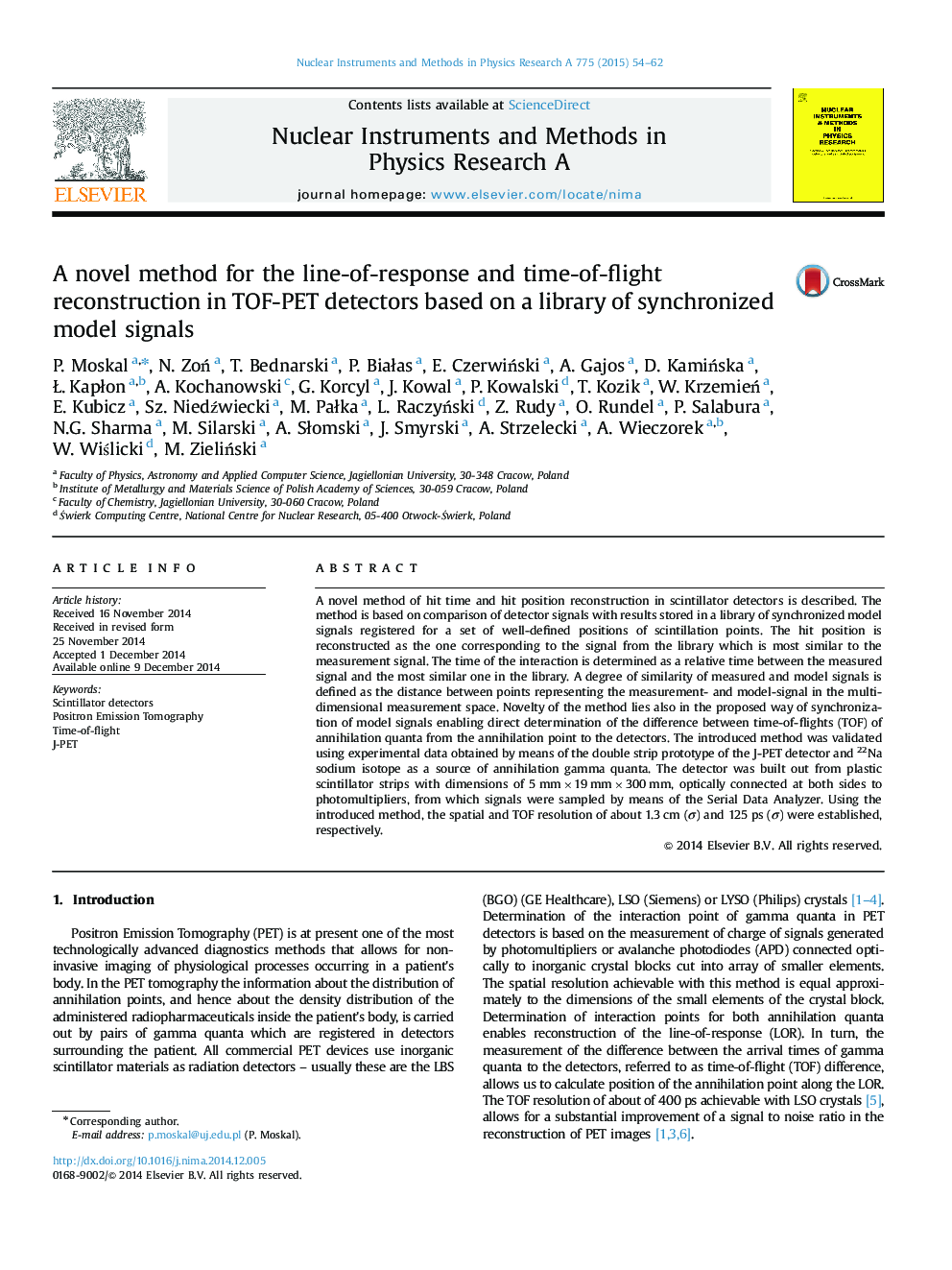| Article ID | Journal | Published Year | Pages | File Type |
|---|---|---|---|---|
| 8174339 | Nuclear Instruments and Methods in Physics Research Section A: Accelerators, Spectrometers, Detectors and Associated Equipment | 2015 | 9 Pages |
Abstract
A novel method of hit time and hit position reconstruction in scintillator detectors is described. The method is based on comparison of detector signals with results stored in a library of synchronized model signals registered for a set of well-defined positions of scintillation points. The hit position is reconstructed as the one corresponding to the signal from the library which is most similar to the measurement signal. The time of the interaction is determined as a relative time between the measured signal and the most similar one in the library. A degree of similarity of measured and model signals is defined as the distance between points representing the measurement- and model-signal in the multi-dimensional measurement space. Novelty of the method lies also in the proposed way of synchronization of model signals enabling direct determination of the difference between time-of-flights (TOF) of annihilation quanta from the annihilation point to the detectors. The introduced method was validated using experimental data obtained by means of the double strip prototype of the J-PET detector and 22Na sodium isotope as a source of annihilation gamma quanta. The detector was built out from plastic scintillator strips with dimensions of 5Â mmÃ19Â mmÃ300Â mm, optically connected at both sides to photomultipliers, from which signals were sampled by means of the Serial Data Analyzer. Using the introduced method, the spatial and TOF resolution of about 1.3Â cm (Ï) and 125Â ps (Ï) were established, respectively.
Related Topics
Physical Sciences and Engineering
Physics and Astronomy
Instrumentation
Authors
P. Moskal, N. ZoÅ, T. Bednarski, P. BiaÅas, E. CzerwiÅski, A. Gajos, D. KamiÅska, Å. KapÅon, A. Kochanowski, G. Korcyl, J. Kowal, P. Kowalski, T. Kozik, W. KrzemieÅ, E. Kubicz, Sz. Niedźwiecki, M. PaÅka, L. RaczyÅski, M. ZieliÅski,
